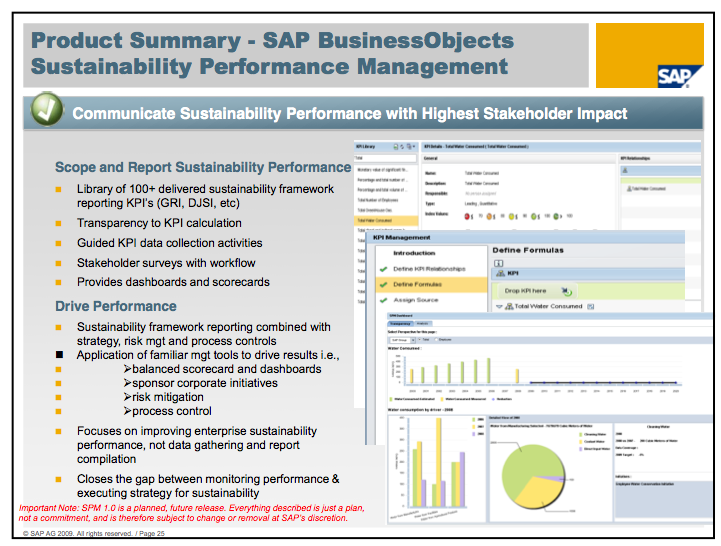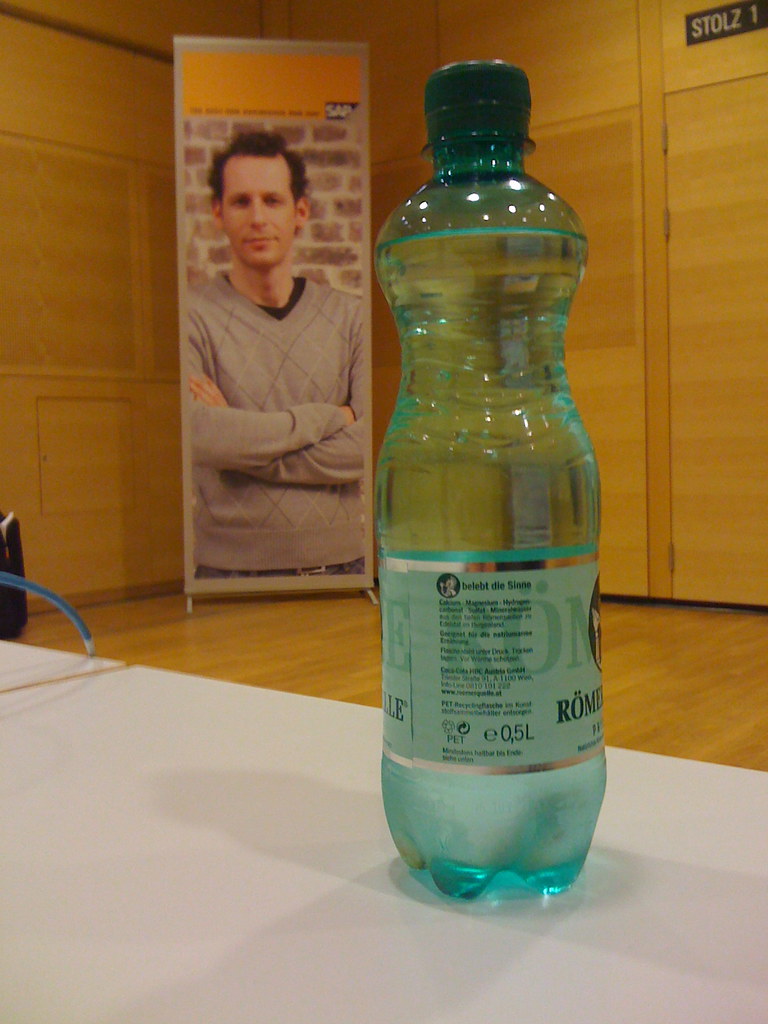Sustainability reporting is a bit all over the place. Standards, such as they are, are many, not widely agreed on, and are loosely observed.
One of the better sustainability reports to emerge this year was SAP’s. Unlike the staid PDF documents most companies put out, SAP’s is a website which allows reasonably deep linking ( here’s the section on SAP’s 2008 Carbon Footprint, for example – notice how you can change it to see footprint by region, KTon or Kg/employee, and get extra info by rolling the mouse over the charts). SAP also rolled out a discussion area where people can comment on SAP’s materiality and the Sustainability report.
Hugely impressive stuff from SAP and extremely innovative.
SAP regularly in discussions around sustainability make the point that while their carbon footprint of almost 500,000 tonnes per annum is significant, the combined footprint of their clientbase is 10,000 times their own! SAP are taking the line that while it is important for SAP to reduce their own emissions, helping reduce their clients carbon footprint could produce a far better long-term planetary outcome. As long as companies remember that, as I have said before, the correct order is Planet first, then People, and then Profit.
SAP have taken the next logical step with their Sustainability report. They have productised it!
Now the technology to produce a sustainability report similar to SAP’s will be available to all SAP customers. The app will connect into most ERP apps to pull out the data for Sustainability Performance Management reporting so being an SAP customer is not a pre-requisite for getting this to work, as far as I understand it.
The app comes with a library of 100+ sustainability framework reporting KPI’s, it comes with a ton of scorecards and dashboards for reporting, which allows companies to focus on improving sustainability performance as opposed to gathering data and compiling reports.
The product is not finalised yet and won’t be made available for another month or two but if it delivers on half of what it promises, it is a potential game changer in the world of sustainability reporting.
I hope to interview someone from SAP shortly to get more details on SAP’s Sustainability Performance Management tool, and as soon as I do, I will post the interview here.
[Disclosure – SAP talked to me about their Sustainability Performance Management at SAP TechEd 2009. They paid for my travel and accommodation to attend this event]


